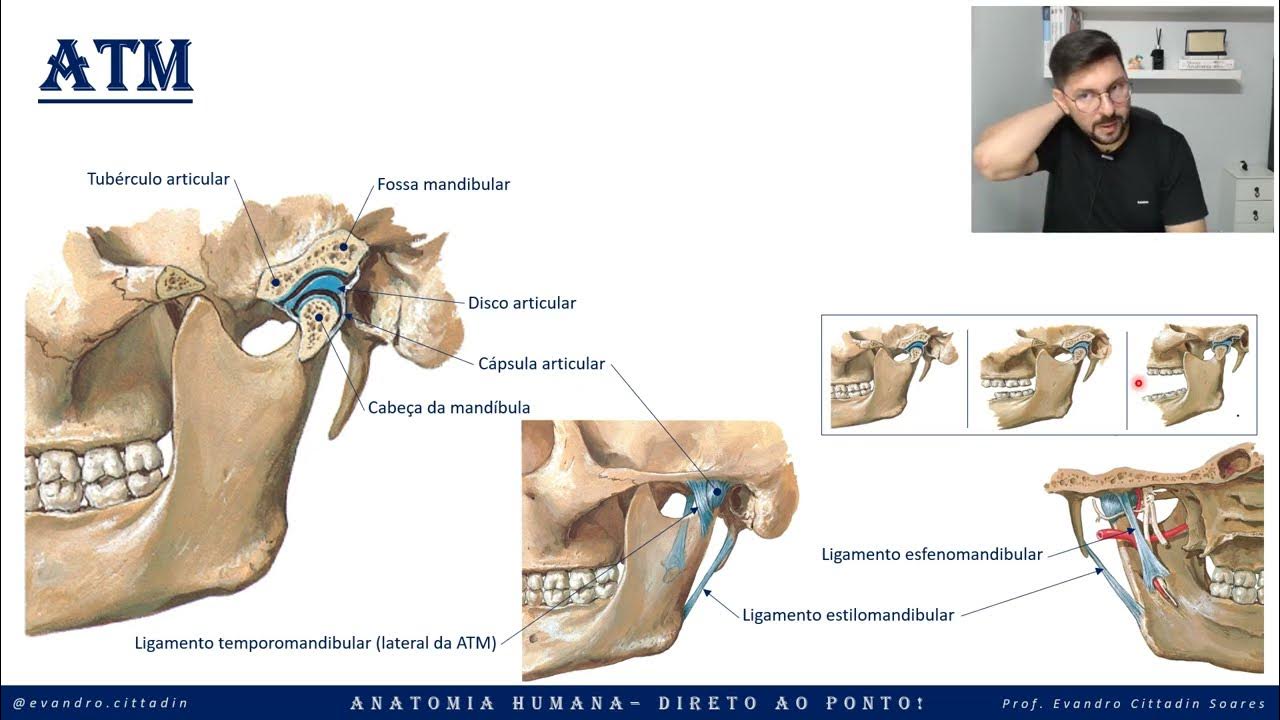Dentacademy - Anatomi Umum - Sistem Mastikasi - Part 1
Summary
TLDRThis video provides an in-depth exploration of the mastication process, covering the anatomy and functions of the teeth, jaw, muscles, and the temporomandibular joint (TMJ). It explains how chewing involves not just the teeth but also various muscles, nerves, and saliva, which help break down food and prepare it for digestion. The script delves into the structures of the teeth, the importance of enamel, dentin, pulp, and other supporting tissues, and how saliva aids in digestion and taste. It also highlights the complex reflex actions involved in the chewing process and how it triggers bodily functions to prepare for food digestion.
Takeaways
- 😀 Mastication is the medical term for the process of chewing, which involves multiple components such as teeth, jaw muscles, saliva, and vascularization.
- 😀 Teeth have a layered structure: enamel (the hardest layer), dentin (softer and yellowish), and pulp (which contains nerves and blood vessels).
- 😀 Tooth decay can lead to pain if it reaches the pulp due to exposed nerves, causing sensitivity even without eating or drinking.
- 😀 The cementum protects the root of the tooth, and if the gums recede, the cementum can become exposed, leading to sensitivity.
- 😀 The periodontal ligament acts as a cushion between the tooth and bone, and damage to it can indicate dental problems.
- 😀 The temporomandibular joint (TMJ) is crucial for mastication and is located near the ear, and pain or discomfort in this area may indicate TMJ disorders.
- 😀 The tongue and lip muscles play a significant role in mastication by helping move food around in the mouth.
- 😀 Saliva is essential for the digestion process, as it moistens food, making it easier to swallow and aiding in taste perception by dissolving food particles.
- 😀 Without saliva, it would be extremely difficult to swallow food, and the absence of it affects the ability to taste food properly.
- 😀 Mastication triggers the production of saliva, which increases as food is chewed, helping prepare the body for the digestive process.
- 😀 The act of chewing is a voluntary action, but it can also become a reflex, with the muscles automatically continuing to chew food as pressure is applied to the mouth's tissues.
Q & A
What is mastication, and what does it involve?
-Mastication is the process of chewing, which involves the teeth, jaw muscles, saliva, and the temporomandibular joint (TMJ). It is essential for breaking down food into smaller particles for easier digestion.
What are the main components of the tooth structure involved in mastication?
-The main components include enamel (the hard outer layer), dentin (a softer, yellowish layer inside the enamel), pulp (containing nerves and blood vessels), and cementum (which covers the tooth's root).
Why does the dentin appear yellowish, and how does it differ from enamel?
-Dentin appears yellowish because it is softer than enamel and has a different composition. It is also less hard, which makes it more sensitive compared to enamel, which is the hardest layer of the tooth.
What happens when a cavity reaches the pulp of the tooth?
-When a cavity reaches the pulp, it exposes the nerves inside the tooth, causing significant pain even if the tooth is not used for eating or drinking.
What is the function of the periodontal ligament?
-The periodontal ligament helps anchor the tooth to the jawbone, acting as a cushion. It also allows for some flexibility during chewing and helps absorb the forces from the bite.
Where is the temporomandibular joint (TMJ) located, and what is its role in mastication?
-The TMJ is located near the ear, and it enables the jaw to move during chewing and speaking. If it is damaged or misaligned, it can cause pain and discomfort while chewing or speaking.
What are the key muscles involved in mastication?
-The key muscles involved in mastication include the masseter, temporalis, and pterygoid muscles. These muscles work together to move the jaw and grind food.
How does saliva contribute to the process of chewing?
-Saliva moistens food, making it easier to chew and swallow. It also contains enzymes that begin the process of breaking down food, and it helps dissolve food particles to stimulate taste sensations.
What role does saliva play in the sensation of taste?
-Saliva helps dissolve food particles, allowing them to interact with taste receptors on the tongue. Without sufficient saliva, it would be difficult to taste food properly.
How does chewing trigger the production of more saliva?
-Chewing stimulates pressure on the mouth's tissues, which signals the body to produce more saliva. This helps lubricate the food for easier swallowing and supports the digestive process.
Outlines

Esta sección está disponible solo para usuarios con suscripción. Por favor, mejora tu plan para acceder a esta parte.
Mejorar ahoraMindmap

Esta sección está disponible solo para usuarios con suscripción. Por favor, mejora tu plan para acceder a esta parte.
Mejorar ahoraKeywords

Esta sección está disponible solo para usuarios con suscripción. Por favor, mejora tu plan para acceder a esta parte.
Mejorar ahoraHighlights

Esta sección está disponible solo para usuarios con suscripción. Por favor, mejora tu plan para acceder a esta parte.
Mejorar ahoraTranscripts

Esta sección está disponible solo para usuarios con suscripción. Por favor, mejora tu plan para acceder a esta parte.
Mejorar ahoraVer Más Videos Relacionados

ATM y Músculos de la Masticación - Anatomía

MÚSCULOS DA ATM #medicina #anatomia #anatomy #medico #fisioterapia #anato #odontologia #odonto

The Mandible: Anatomy and Muscles (3D Animation)

Temporomandibular Joint 😲 | Biomechanics Part 2/2

ATM - Articulação temporomandibular - Sistema articular - Anatomia direto ao ponto!

Anatomia da Articulação Temporomandibular (ATM) PARTE 1
5.0 / 5 (0 votes)
